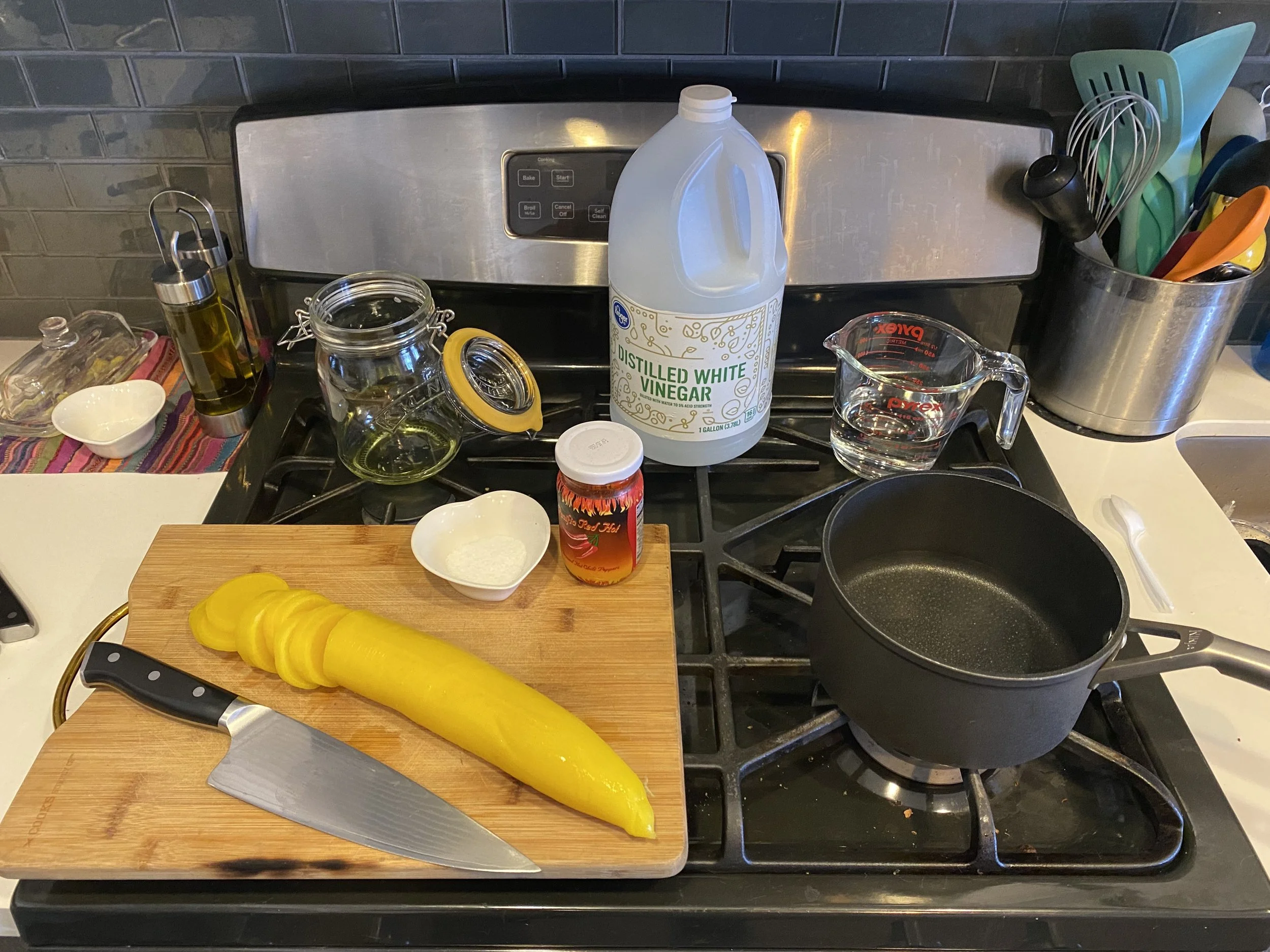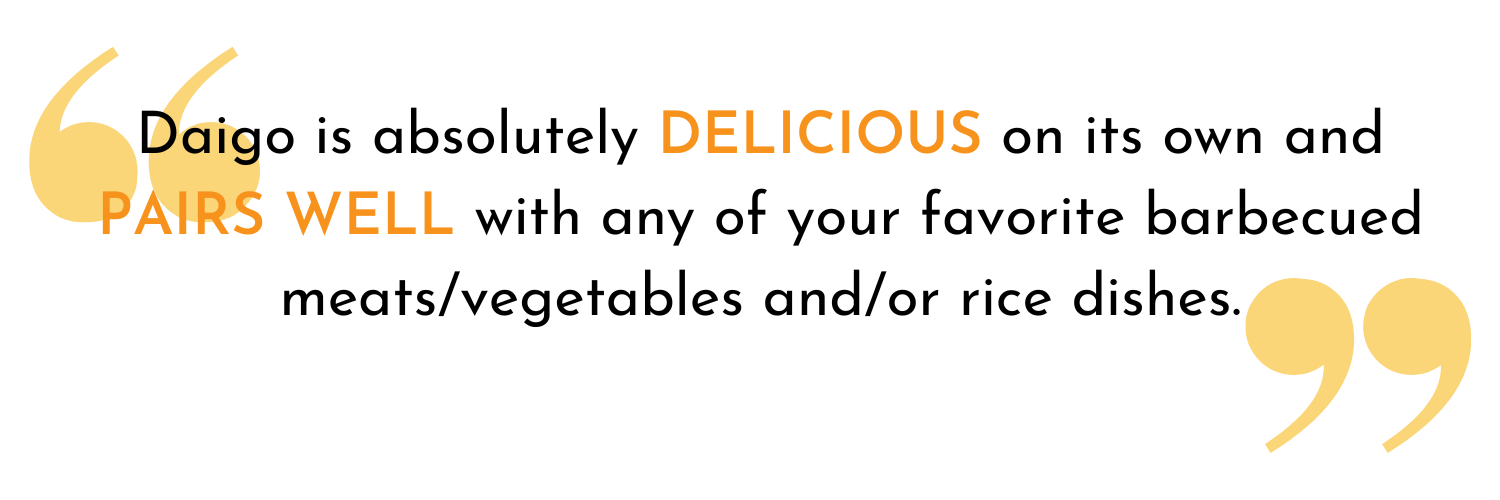Our Taste of Home: Daigo
by Chris Tenorio
When I was younger, there was a pickled food I used to eat and associate with the other CHamoru foods I ate when I was living in Guahan (and later with family in California) we called daigo. It’s a yellow, pickled radish that is typically eaten as a side dish to accompany meat and rice, but it’s also delicious on its own as a crunchy, spicy snack. Many years later, I would occasionally find myself eating at various Japanese and Korean restaurants in California to find the similar yellow, circle-sliced cuts of pickled radish being served as a side dish. I would immediately think of home, my island, and my family- until I took a bite. These slices of radish never quite tasted the same way that I remembered. Despite still being delicious, they were a little too sweet and mild from the daigo that I grew up eating.
Later, I would learn that the vegetable that these similar pickled dishes come from is called “daikon”, and the yellow pickled variant is named takuan (in Japanese) or danmuji (in Korean). Recipes for creating takuan or danmuji involve slicing the daikon radish into a preferred shape or leaving it almost whole (minus the root), and then pickling as usual with salt, sugar, rice wine vinegar, and turmeric. The turmeric is where the dish gets its distinct yellow color from, though most of the time you will find it substituted with yellow food coloring or left out entirely, leaving the radish in its natural white color.
Interestingly, to make CHamoru daigo many recipes actually have you start with pre-prepared takuan or danmuji that you can buy at the store- which is mostly attributed to Guahan’s import-based economy, colonial history, and the islands geographical proximity to East and Southeast Asia. Typically you’d buy the vacuum-sealed pickled radish in long cuts and later slice them to your desired shape (I prefer whole circles) and re-pickle them with even more salt, white vinegar, and lots of donne (Mariana Islands boonie peppers). The end result creates an intensely flavored pickled dish that is equal parts sweet, salty, tangy and spicy while still retaining a satisfying crunch. If you have the means and the time to do so however, you can also start with raw daikon cut into your preferred shape and pickling with water, salt, sugar, white or rice wine vinegar, turmeric and donne to your taste from the beginning. This will allow you to control the ratios of salt, spice, tang and sweetness from the initial pickling process while potentially retaining an even crunchier radish. Some variants of daigo also add some variety to the dish by including cucumber and/or carrots to be pickled alongside the daikon.
Daigo is absolutely delicious on its own and pairs well with any of your favorite barbecued meats/vegetables and/or rice dishes. You can try substituting it for pickles in a sandwich, or if you’re like me, just eat it straight out of the jar until it’s time to make more.




